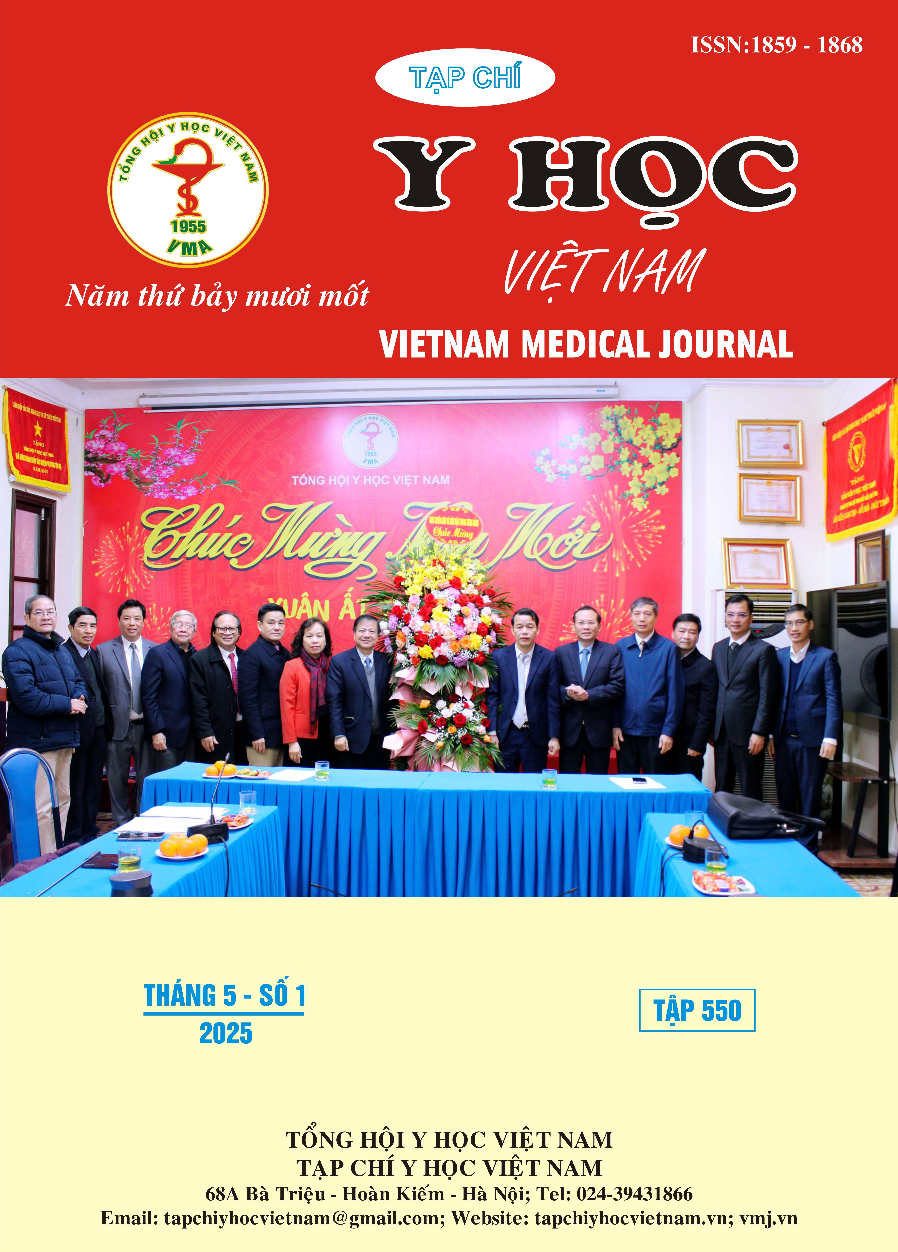ĐẶC ĐIỂM THIẾU NƯỚC CỦA NGƯỜI TRƯỞNG THÀNH DỰA TRÊN ĐÁNH GIÁ THỰC THỂ VÀ CẬN LÂM SÀNG
Nội dung chính của bài viết
Tóm tắt
Nghiên cứu cắt ngang nhằm mô tả tình trạng thiếu nước dựa trên lượng nước tiêu thụ hàng ngày, các dấu hiệu thực thể và cận lâm sàng trên 35 đối tượng người trưởng thành từ 18 tuổi trở lên, trong thời gian từ tháng 4/2024 đến tháng 6/2025 cho kết quả: Lượng nước tiêu thụ trung bình là 1286,8 ± 371,9ml, trong đó tỉ lệ tiêu thụ ít hơn 1200ml là 51,4% và không đạt nhu cầu khuyến nghị là 57,1%. 14,3% ĐTNC có dấu hiệu khô môi, 34,3% có triệu chứng táo bón. Tỷ lệ đối tượng thiếu nước theo ALTT và tỉ lệ BUN/Creatinine lần lượt là 5,7% và 28,6%. 71,4% đối tượng thiếu nước khi đánh giá bằng máy Inbody 770. Không có mối liên quan có ý nghĩa thống kê giữa các phương pháp cận lâm sàng, thực thể cũng như lượng nước tiêu thụ và tổng lượng nước cơ thể ở ngưỡng thấp đánh giá bằng máy Inbody 770.
Chi tiết bài viết
Từ khóa
thiếu nước, tổng lượng nước cơ thể, Inbody 770
Tài liệu tham khảo
2. Jéquier E, Constant F. Water as an essential nutrient: the physiological basis of hydration. Eur J Clin Nutr. 2010;64(2):115-123. doi:10.1038/ ejcn.2009.111
3. Zhang J, Ma G, Du S, Liu S, Zhang N. Effects of Water Restriction and Supplementation on Cognitive Performances and Mood among Young Adults in Baoding, China: A Randomized Controlled Trial (RCT). Nutrients. 2021;13(10):3645. doi:10.3390/nu13103645
4. F M, A W. The importance of good hydration for the prevention of chronic diseases. Nutr Rev. 2005;63(6 Pt 2). doi:10.1111/j.1753-4887.2005. tb00150.x
5. Zhang N, Du SM, Zhang JF, Ma GS. Effects of Dehydration and Rehydration on Cognitive Performance and Mood among Male College Students in Cangzhou, China: A Self-Controlled Trial. Int J Environ Res Public Health. 2019;16(11):1891. doi:10.3390/ijerph16111891
6. Mehta AR. Why does the plasma urea concentration increase in acute dehydration? Adv Physiol Educ. 2008;32(4):336-336. doi:10.1152/ advan.90185.2008
7. Volkert D, Beck AM, Cederholm T, et al. ESPEN practical guideline: Clinical nutrition and hydration in geriatrics. Clin Nutr. 2022;41(4):958-989. doi:10.1016/j.clnu.2022.01.024
8. Riccardi A, Chiarbonello B, Minuto P, Guiddo G, Corti L, Lerza R. Identification of the hydration state in emergency patients: correlation between caval index and BUN/creatinine ratio.
9. Ma G, Zhang Q, Liu A, et al. Fluid intake of adults in four Chinese cities. Nutr Rev. 2012;70(suppl_2): S105-S110. doi:10.1111/ j.1753-4887.2012.00520.x
10. Fortes MB, Owen JA, Raymond-Barker P, et al. Is This Elderly Patient Dehydrated? Diagnostic Accuracy of Hydration Assessment Using Physical Signs, Urine, and Saliva Markers. J Am Med Dir Assoc. 2015;16(3):221-228. doi:10.1016/j.jamda. 2014.09.012


